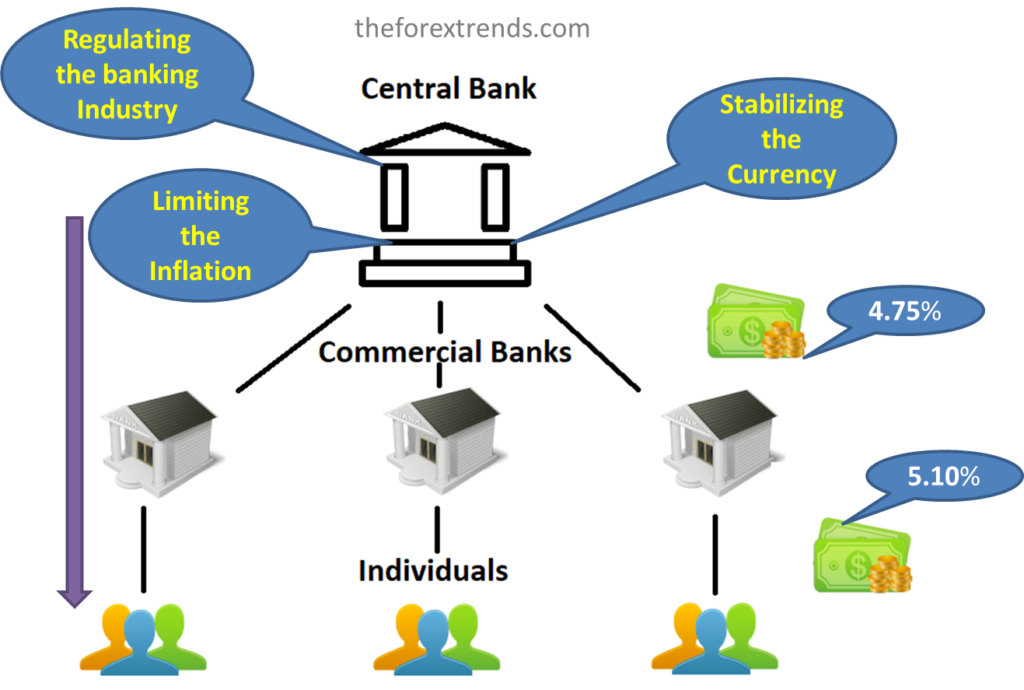Worldwide Central Banks and their roles
In this article, we will discuss Worldwide Central Banks and their roles.
It is not enough to learn about economic indicators when you are trading in the Forex market. Before you get into the market moving indicators, it is important to understand the mandates of the different worldwide central banks and their roles. Worldwide central banks will impact the currency you are trading because they will tremendously impact the sentiment just with a change of interest rate decision or monetary policy decision or any central bank intervention to the Forex market.
You will lose money in the long term if you skip learning about any important currency market drivers. So you have to learn all the fundamental facts around the world. I know it is not very simple, and that’s why most retail traders are ignoring this stuff of trading. Believe us if you take a keen interest in it we are there to make you a successful trader and you will definitely become a master of fundamental analysis along with technical analysis.
While different central banks have different mandates, they have a couple of functions in common. Central banks are known as the lenders of last resort. Because aside from being responsible for regulating the country’s money supply through monetary policy tools, they can lend money to commercial banks, especially during financial crises or tight banking conditions.
In the world of central banks, there is a certain phrase that is commonly used to describe the actions of central bankers and their outlook for interest. There are a few examples below:
Hawkish:–
Central bank’s bias toward increasing interest rates due to the country’s economy growing too fast or inflation rising or the need to hike the value of domestic currency etc. Remember these all economic indicators are linked to each other by the way.
Dovish:–
Central bank’s bias towards cutting interest rates due to the concern that the economy is slowing down too fast or deflation is rising or the need to decrease the value of domestic currency etc.
Central Bank Intervention:–
Action taken by central banks to induce movement in currency rates is known as central bank intervention. For export-driven countries, their central banks will intervene more often to keep exports competitive.

Now I discuss below several central banks in the world which is much effective for the Forex market:
U.S Federal Reserve (Fed):–
Currency: USD
The federal reserve, in short, the Fed is the central bank of the united states. The FOMC (Federal Open Market Committee) Fed funds rate should be taken note of, especially for traders who are trading the USD pairs. FOMC comprises 12 members and has the right to determine the interest rate of the USA.
The Fed’s key mandate is to ensure maximum employment and maintain inflation rates at 2% and maintain economic growth at a desirable rate. The Fed is also responsible determine the reserve ratio required to be held by banks. The Fed is closely monitored by traders since the USD is the main reserve currency in the world.
Bank of Japan (BOJ):–
Currency: JPY
The Bank of Japan is responsible for ensuring the financial stability of the Japanese economy and the policy board is responsible for setting interest rates.
Since Japan is an export-driven country, it is against the Bank of Japan’s interest for the Yen to strengthen too much. Hence, intervention by BOJ is more often compared to the other central banks to prevent the yen from becoming too expensive.
European central bank (ECB):–
Currency: EUR
The ECB is the central bank of the 19 members of the European Union countries. This central bank’s mandate is to maintain a stable inflation rate of 2% and ensure currency stability.
You need to take note of the monetary policy decisions made by the bank governing council, which is responsible for set refinancing operation rates, marginal lending facility rates, and deposit facility rates.
Swiss National Bank (SNB):–
Currency; CHF
Switzerland’s central bank is responsible for the CHF, and it mandates it to maintain economic growth and price stability and inflation rates to 2%. The 3-month LIBOR market is used to determine interest rates.
The SNB also oversees the financial market infrastructures as a strategy to promote financial stability.
These are just a few examples of central banks and their roles in the Forex market. Other central banks, such as the Bank of Canada (BOC), Bank of England (BOE), the Reserve Bank of New Zealand (RBNZ), and Reserve Bank of Australia (RBA,) also play significant roles in their respective economies and impact their respective currencies in the Forex market. Hence you also need to focus on other central banks’ activity too.
I hope this article is helpful for you to understand Worldwide Central Banks and their roles.
Stay tuned to our website for more tutorials about Forex Market. If you have any suggestions or queries, feel free to Contact us or drop your message in the comment section below.
In this article, we will discuss Worldwide Central Banks and their roles. It is not enough to learn about economic indicators when you are trading in the Forex market. Before you get into the market moving indicators, it is important to understand the mandates of the different worldwide central banks and their roles. Worldwide central banks…
